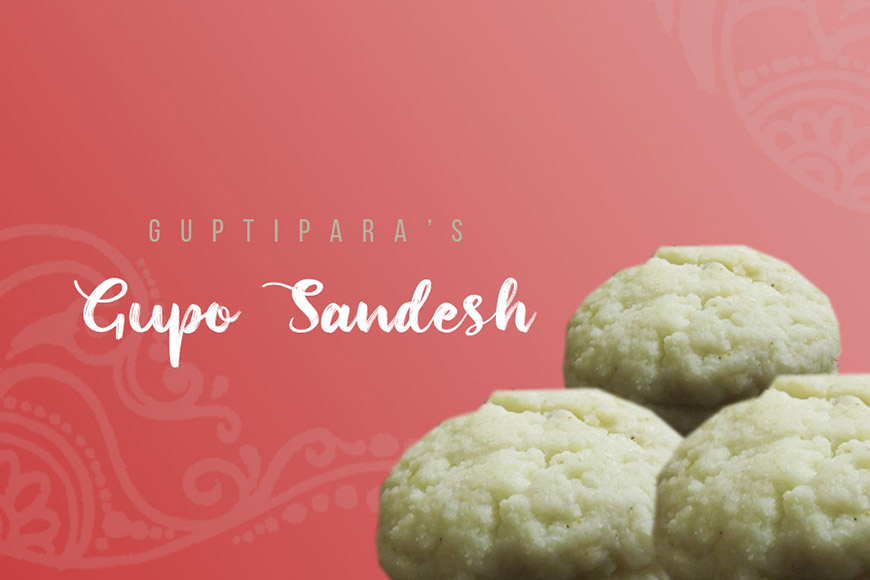Guptipara’s Gupo Sandesh is Bengal’s first branded sweet

Guptipara is a small ancient town, some 80 kilometers from Kolkata (Calcutta), on the Bandel-Katwa railway line. Guptipara sits beside the Bhagirathi river and was once a citadel of Vaishnavite culture. Even today, residents observe Ras, Dol and Ratha-Yatra, which is Guptipara’s greatest festival. It was also an ancient seat of learning. Many Sanskrit scholars and Nyayashastra pundits hailed from Guptipara.
According to lore, centuries ago, during the reign of Mughal Emperor Akbar, a mendicant named Satyadev Saraswati stopped on his track as he was mesmerized by the beauty and peaceful ambiance of the place on the bank of the river and decided to terminate his journey there. He built an ashram on the bank of the river and established a temple dedicated to Sri Vrindavan Chandra Jiu. The adjoining area came to be known as Gupt Vrindavan Pally and from there it was shortened and colloquially came to be known as Guptipara, a name that became its identity.
Guptipara is a delightful haunt for sweetmeat gourmets. The famous Gupo Sandesh, considered by many to be Bengal’s first branded sweet, originated here. It is believed that the dessert was named thus because it was created by local confectioners of Guptipara. Pure cow milk is used to make this sandesh. Cow milk is curdled by adding food acids such as lemon juice and calcium lactate and straining. It is very similar or analogous to cottage cheese but is formless. The cheese curd (Chhena) is wrapped in a cloth and beaten vigorously to expel the extra water. Sugar or gur (molasses) is added to the chhena and then the cheese is twisted and given a roundish shape with hands.
During winter, molasses (Nolen Gur or Khejur Gur) is mixed with chhena, but at other times it is sugar. Gupo Sandesh is also known as Jora Sandesh. This Sandesh was patronized by the royalty, the nobility and rich zamindars from distant lands. Local sweetmeat makers used to export freshly made Gupo Sandesh to patrons by boats from Guptipara. Various types of mouth-watering sweets were made along with Gupo Sandesh which included Murki, Batasa, Mukha Sandesh and Bata Sandesh. In those days, Guptipara supplied this popular sandesh to all corners of Calcutta. But things have changed now and the demand for Gupo Sandesh has dwindled. Lack of expert karigar (makers of the sweetmeat) has also affected the demand for this delectable dessert. Despite all odds, a few shop owners are fighting against all odds to keep the tradition of making Gupo Sandesh alive. But lack of promotion is affecting the sales of this traditional tasty sweetmeat. If adequate steps are not taken to preserve the heritage, this tasty dessert will become extinct someday.










